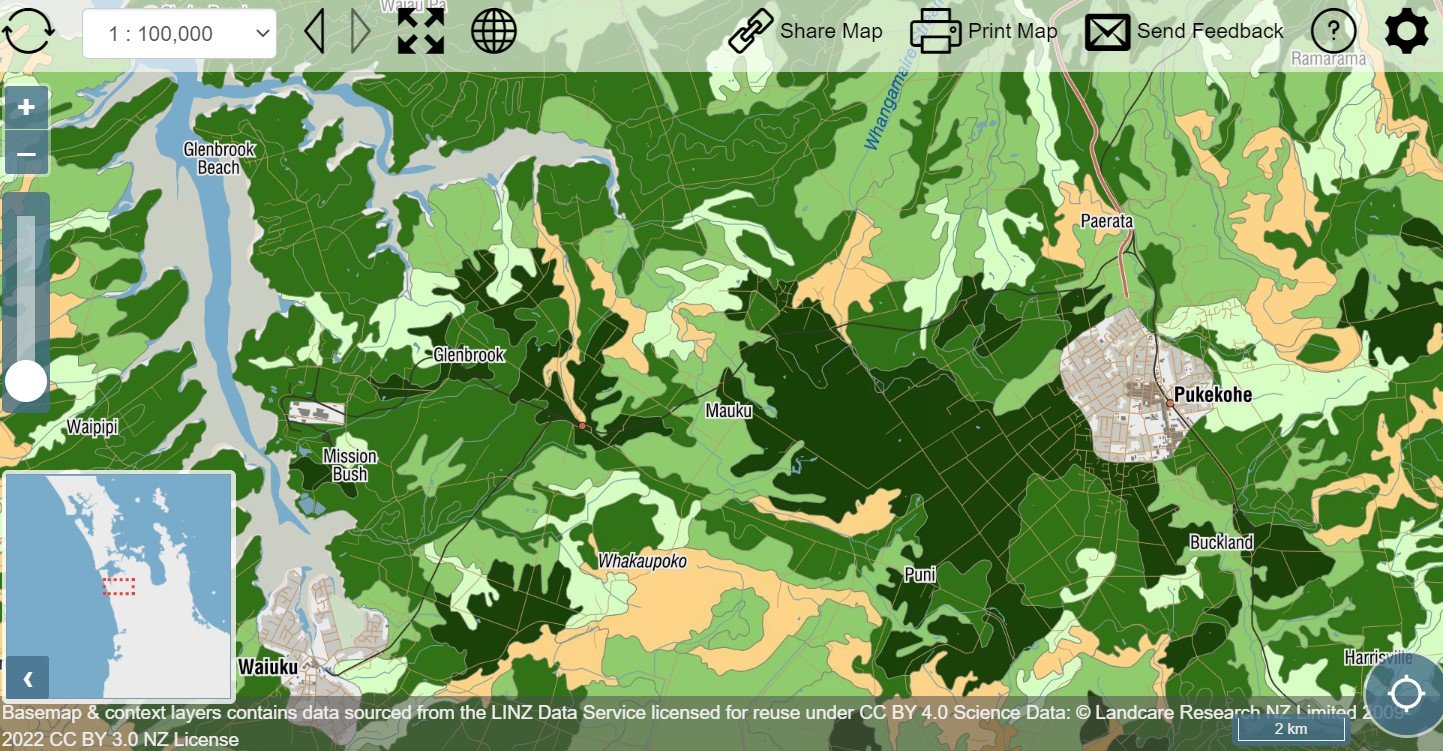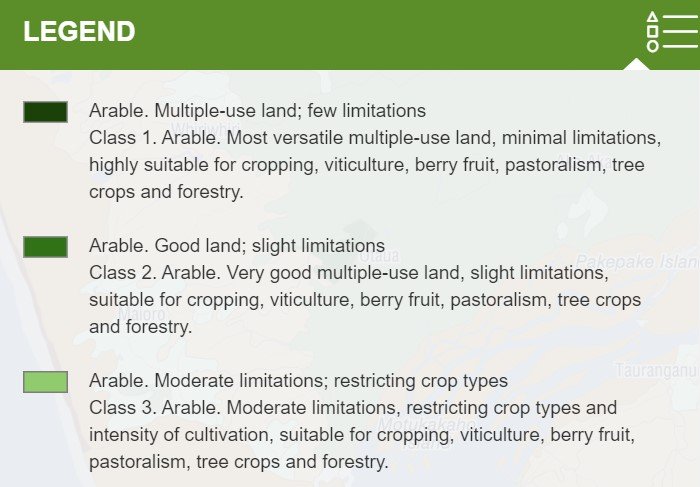Questions Answered: National Policy Statement for Highly Productive Land (NPS-HPL)
The new National Policy Statement for Highly Productive Land (NPS-HPL) was released on 18 September. It is a further addition to the government’s gradual build-out of what will eventually become the National Planning Framework.
The NPS-HPL is designed to ensure the availability of New Zealand’s most favourable soils for food and fibre production, now and for future generations.
The NPS-HPL provides direction to improve the way highly productive land is managed under the Resource Management Act 1991 (RMA).
From the date of commencement on 17 October 2022, the NPS-HPL will have an immediate effect on use and development of highly productive land in New Zealand.
Our article focuses on what we expect to be commonly asked questions regarding consequences for Auckland and the Auckland Unitary Plan (AUP).
How is highly productive land currently managed under the AUP?
The use of Land Use Capability (LUC) classes to determine land most suitable for rural production purposes is not new to the AUP, with LUC Class 1 being used to assist in defining those sites containing ‘elite soils’ and LUC Classes 2 & 2 used to define sites containing “prime soils”.
The current priority for this rural land is set out in B9 Rural Environment. The potential for these high quality soils to be used for agricultural purposes, rather than activities that are not dependent on soil quality, is sought to be maintained.
Currently, rural land with elite soil (LUC Class 1) has the highest level of protection. For example, rural subdivision objective E39.2(10)(a) requires that subdivision of land containing elite soils is avoided. This is a strong direction to decision-makers.
Subdivision of land containing prime soils is also to be avoided, but only ‘where practicable’, per objective E39.2(10)(b).
Regional Policy Statement (RPS) Policy B9.3.2(1) says ‘Avoid new countryside living subdivision, use and development on land containing elite soil and discourage them on land containing prime soil.’
Under NPS-HPL, LUC Classes 2 & 3 are elevated to the same status as LUC Class 1.
For the most part, this will mean that the current ‘avoid’ directive for subdivision relating to elite soils will also extend to prime soils, except in specific circumstances as set out in the NPS-HPL.
There will also be a more stringent regime for controlling use and development on LUC Class 1, 2 & 3 land.
What is the timing for Auckland Council to give effect to the NPS-HPL in the AUP?
Auckland Council will be required to apply the NPS-HPL from the commencement date on 17 October 2022.
Auckland Council must notify changes to the AUP RPS, to include maps of the region that identify highly productive land as soon as reasonably practicable and within three years of the NPS-HPL coming into effect.
District plan objectives, policies and rules in the AUP to give effect to the NPS-HPL must be made soon as practicable and within two years of the land maps in the RPS becoming operative. We expect that Auckland Council may undertake the RPS and district plan amendment work at the same time, given the advantages of operating as a unitary authority.
The AUP will likely see new rules for subdivision, use and development, including appropriate exceptions for specified infrastructure and for specified Māori land.
What zones in Auckland are affected by the NPS-HPL?
The NPS-HPL will apply to general rural and rural production zones, or their nearest equivalent zone in Auckland, noting that Standard 8 (Zone Framework Standard) of the National Planning Standards (NPS) have not yet been implemented here.
The following are defined as ‘Rural zones’ in Auckland, per Chapter J1:
Rural – Rural Production Zone;
Rural – Mixed Rural Zone;
Rural – Rural Coastal Zone;
Rural – Rural Conservation Zone;
Rural – Countryside Living Zone;
Rural – Waitākere Foothills Zone; and
Rural – Waitākere Ranges Zone
A ‘rural production zone’ in the NPS includes areas used predominantly for primary production activities that rely on the productive nature of the land and intensive indoor primary production. The zone may also be used for a range of activities that support primary production activities, including associated rural industry, and other activities that require a rural location.
We expect that Auckland Council will consider the ‘Rural - Rural Production Zone’ to be the nearest equivalent zone. They share the same name and a similar zone description.
Where it gets tricky is determining what in Auckland is a ‘general rural zone’. These are areas used predominantly for primary production activities, including intensive indoor primary production. The zone may also be used for a range of activities that support primary production activities, including associated rural industry, and other activities that require a rural location.
We expect that the Rural - Mixed Rural Zone and Rural - Rural Coastal Zone will fall within this category.
Having regard to the AUP zone descriptions, we do not expect that any of the other zones listed will be considered ‘nearest equivalent’ zones. While ‘rural’, they are not predominantly for primary production purposes.
We will look to update this guide once Auckland Council provide further advice on affected zones.
How can I find the LUC Class of my land?
Landowners and experts advising them can check whether land will be affected by the NPS-HPL by checking the LUC class of the land using the Landcare LUC map.
If there is more detailed site mapping available that uses the same LUC classification system, this mapping will take precedent.
We expect that sites containing the following will continue to be treated as LUC Class 1, notwithstanding their classification on the Landcare mapping:
Land with other unique location or climatic features, such as the frost-free slopes of Bombay Hill;
Bombay clay loam;
Patumahoe clay loam;
Patumahoe sandy clay loam; and
Whatitiri soils.
My site is located within Future Urban Zone, will it be affected?
No. NPS-HPL clause 3.4(2) says that any land identified for future urban development must not be mapped as highly productive land. This means that any land in Auckland (see example below) that is zoned H18 Future Urban Zone will not be mapped as highly productive, regardless of LUC class.
The land shown in yellow around Kumeū-Huapai is zoned Future Urban and will not be mapped as highly productive land, notwithstanding any current rural use, or soil classification.
What happens if rural land that is highly productive is currently subject to a plan change?
Land is not considered to be highly productive land if it subject as of 17 October 2022 to a council initiated or adopted notified plan change to rezone it from a general rural or rural production zone to an ‘urban zone’ or a rural lifestyle zone (as defined in the National Planning Standards, would typically be Rural - Countryside Living in Auckland).
Note that a private plan change not adopted by Auckland Council as its own will be affected by the NPS-HPL.
Is land only affected once it has formally been mapped?
No. The objective, policies and implementation requirements of the NPS-HPL have full effect from 17 October 2022, even before Auckland Council completes the required mapping exercise.
Auckland Council is required to apply the policies of the NPS-HPL to land having the relevant characteristics of what may constitute "highly productive land", and its current zoning, per clause 3.5(7).
This will affect private plan changes, and some resource consent applications.
Any land within a relevant zone that falls with LUC Class 1, 2 or 3 will be affected. You can check the Landcare LUC map here.
Subdivision, use or development of relevant rural zone sites currently containing elite or prime soils under the current AUP provisions will in many cases require consideration against the NPS-HPL.
While land zoned Rural - Rural Production will most certainly be captured by clause 3.5(7), it is unclear at this stage what other rural zones Auckland Council will consider are the equivalent of ‘general rural’.
We expect that Rural - Mixed Rural Zone and Rural - Rural Coastal Zone will be affected.
It is possible that some land will be affected by the NPS-HPL until mapping is completed, but then fall away once it is determined that a site is not within a a large and geographically cohesive area.
What land use activities can still be undertaken on highly productive land?
All use and development of highly productive land is inappropriate unless listed in clause 3.9(2) of the NPS-HPL. The exceptions include use and development:
For land-based primary production (i.e., production from agricultural, pastoral, horticultural or forestry activities, that is reliant on the soil resource of the land).
That provides supporting activities on the land (i.e., those activities that are reasonably necessary to support land-based primary production on that land, such as on-site processing and packing, equipment storage, and animal housing).
That address a high risk to public health and safety.
For, or is for a purpose associated with, a matter of national importance under section 6 of the RMA.
Are on specified Māori land (detailed definition in clause 1.3, the Interpretation section of the NPS-HPL).
To protect, maintain, restore, or enhance indigenous biodiversity.
To provide for public access.
Are a part of retiring land from land-based primary production for the purpose of improving water quality.
That are small-scale or temporary and have no impact on the productive capacity of the land.
That is for an activity by a requiring authority in relation to a designation or notice of requirement under the RMA.
Are for specified infrastructure, defence, mineral exploration or quarrying where there is a functional or operational need for the activity.
If an activity is currently a permitted activity on highly productive land in the AUP (see H19 Rural Zones) and is not listed above (see the more detailed list at clause 3.9), this activity will continue to be permitted until Auckland Council change the plan to give effect to the NPS-HPL.
Similarly, if an activity is currently a controlled activity, then an application for resource consent must still be granted until the AUP is updated.
However, if the activity status in the AUP is restricted discretionary, discretionary, or non-complying, Auckland Council decision-makers could decline the land-use consent application if it is contrary to Policies 3 and 8 and clause 3.9 of the NPS-HPL.
These policies and clause 3.9 will need to considered as part of the Council’s assessment under section 104 of the RMA, including the requirement to have regard to the relevant provisions of the NPS-HPL under section 104(1)(b)(iii).
If a landowner does not meet the requirements under clause 3.9, they could potentially try to demonstrate in their application that the land is subject to permanent or long-term constraints, per clause 3.10.
However the onus of proof is high and applicants would need to engage experts to prepare the necessary assessments in order to qualify. Note that the potential economic benefit of using the land for purposes other than land-based primary production cannot be considered, e.g., it does not matter if the land is more valuable for residential or rural lifestyle, than rural production.
Can highly productive land still be subdivided?
The key policy in the NPS-HPL relating to subdivision is Policy 7:
The subdivision of highly productive land is avoided, except as provided in this National Policy Statement.
The main implementation clauses in the NPS-HPL that apply to subdivision consents are clause 3.8 (avoiding subdivision of highly productive land) and clause 3.10 (exemptions for land subject to permanent or long-term constraints).
For subdivision applications, the starting point for whether highly productive land can be subdivided is clause 3.8.
Auckland Council decision-makers will need to consider whether the proposed lots can retain the overall productive capacity of the subject land over the long term (at least 30 years). This would allow for boundary adjustments and the subdivision of large lots that can still support land-based primary production activities but would prevent highly productive land being subdivided into small, unproductive rural lifestyle lots.
For rural land continuing ‘elite’ LUC Class 1 soils, this is not too different from current plan provisions. However for those sites containing ‘prime’ LUC Class 2 & 3 soils, subdivision activities particularly for rural lifestyle are now much more difficult, and for the most part would no longer be allowed.
The activity status of most forms of subdivision in productive rural zones in E39 Subdivision is discretionary or non-complying. For these activities, Auckland Council can consider all potential effects and all relevant statutory documents and provisions, including the NPS-HPL under section 104(1)(b)(iii) of the RMA.
We expect that Auckland Council could from the date of commencement decline a subdivision application on highly productive land if it is contrary to Policy 7 and clause 3.8 of the NPS-HPL, and does not relate to specified Māori land or for specified infrastructure or defence facilities.
If a landowner does not meet the requirements under clause 3.8, they could potentially apply to subdivide their highly productive land using the permanent or long-term constraints assessment hierarchy set out in clause 3.10.
However the onus of proof is high and applicants would need to engage experts to prepare the necessary assessments in order to qualify. Note that the potential economic benefit of using the land for purposes other than land-based primary production cannot be considered, e.g., it does not matter if the land is more valuable for residential or rural lifestyle, than rural production.
Our current thoughts
The NPS-HPL will from the date of commencement have an impact on private plan changes and resource consents. This is in contrast to the National Policy Statement on Urban Development, which primarily contained implementation requirements for territorial authorities at a council-initiated plan change level.
The NPS-HPL may have the effect of decreasing land value at the urban-rural edge, where this land may previously have been under economic pressure to be converted into its ‘highest and best use’, i.e., housing or other forms of urban development. Consequently, land value within the Future Urban Zone and other existing urban zones may increase, as the amount of land hypothetically able to be utilised for urban development decreases. This pricing effect may however be less prominent in Auckland where the AUP already contains a comprehensive planning framework that limits urban development outside of urban and future urban areas.
Unless highly productive land can be shown as being subject to permanent or long-term constraints under clause 3.10 of the NPS-HPL, changes to Rural - Countryside Living zoning within existing rural zoned areas is highly unlikely to be accepted. We expect that the long-term consequence of this will be more pressure on other zones to accommodate this type of rural-residential activity.
Further resources
For further reading, we’ve provided outbound links to some of the key fact sheets and information published by the Ministry for the Environment:
The following further technical guidance will be released by January 2023 for local authorities:
More detail on how to give effect to the NPS-HPL through mapping highly productive land and updating regional policy statements and district plans to give effect to the NPS-HPL
Guidance on options for giving effect to the NPS-HPL either under the RMA, or through the new RM system
Detailed guidance on the processing of plan changes and resource consent applications that will expand and build on the high-level information currently available.






